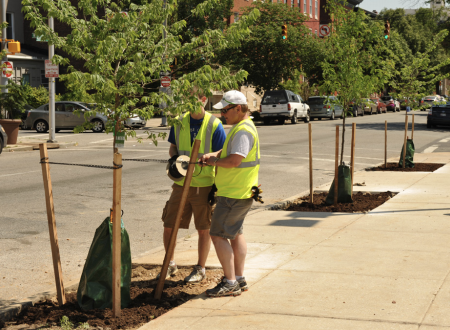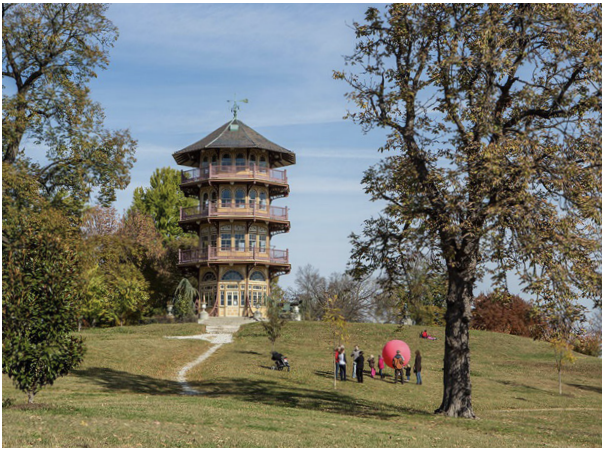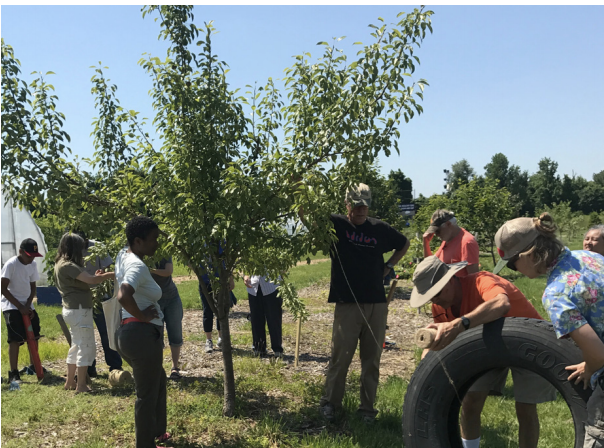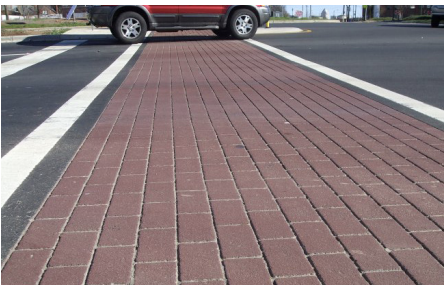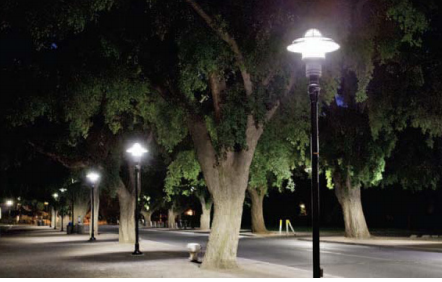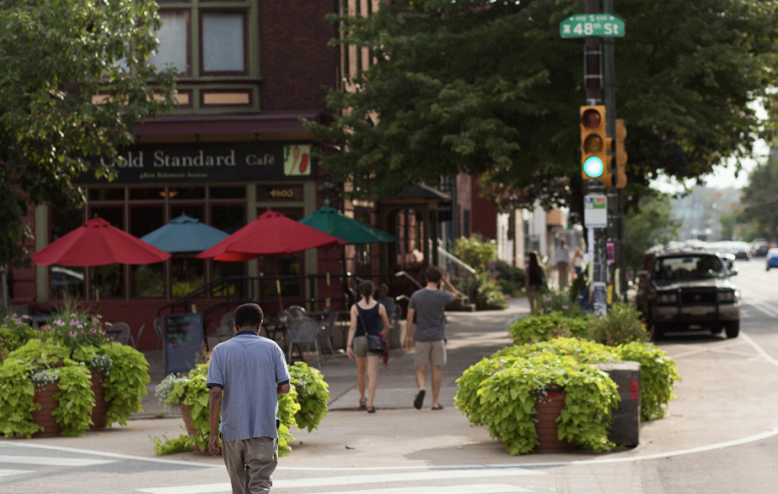THE NEIGHBORHOOD
Druid Heights is a neighborhood in Baltimore City. It is approximately 57.9 acres and is generally bordered by North Avenue to the north, Pennsylvania Avenue to the west, Laurens Street to the south, and Madison Avenue to the east. The neighborhood is a part of the Old West Baltimore Historic District, which is nationally recognized as Baltimore City’s premier African American community. With its grand, three-story row houses along Druid Hill Avenue and McCulloh Street, Druid Heights was home to many of the district’s most prominent residents.
Today, the population of Druid Heights is significantly smaller, and many of the houses are abandoned and deteriorating. Working with the state, the city has stepped up its efforts to demolish significantly vacant blocks, but the vacant lots left behind by the demolition attracts dumping and other unwelcome and illegal activities.
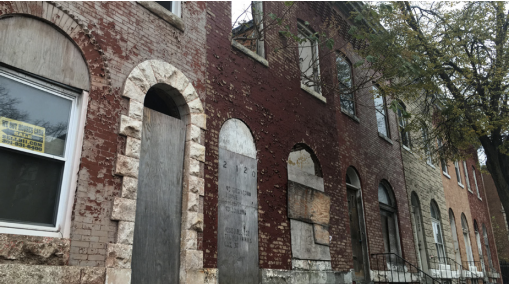
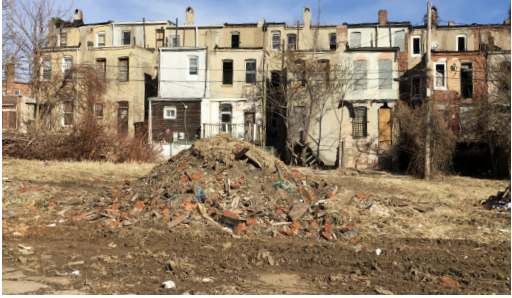
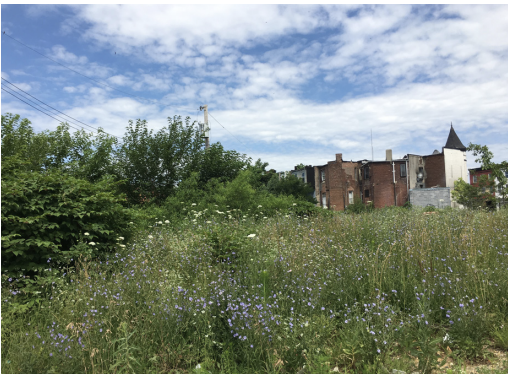
CHALLENGES
High Vacancy - over 40% of Druid Heights properties are vacant.
Above Average Crime Rate - crime figures for Druid Heights are generally higher than the city average. While Studies have linked higher vacancy rates to greater criminal activities.
Lack of Green Space - there are only 3 publicly accessible green spaces in Druid Heights totaling less than half an acre.
Low Tree Canopy - tree canopy cover in Druid Heights is less than half of the city figure.
High Impervious Cover - nearly 70% of the neighborhood is covered by roof, roads, and other forms of paved surfaces. This exacerbates the heat island effect and increases the runoff volume during rain events.
GREEN SPACE
Repurpose vacant properties as open green space
One potential use for vacant properties is open green space to serve neighborhood residents. These green spaces could range in size and uses. Larger contiguous lots, for instance, could be redeveloped as playfields and ball courts, while smaller lots could be cleaned and used as meeting spaces or community gardens.
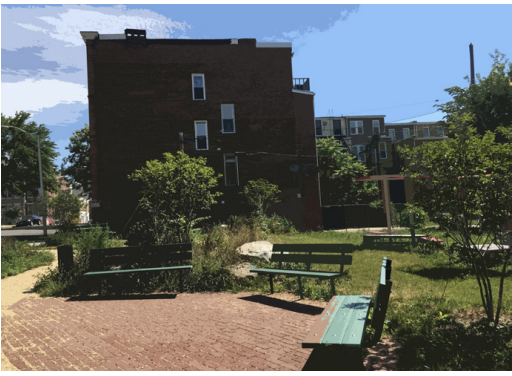
Druid Square
The high concentration of vacant properties at the center of the neighborhood presents an opportunity to create a square park that provides recreational opportunities as well as potential for stormwater management. This park could also serve as a catalyst for housing development surrounding the park.

Gold Street Park
The quarter-acre vacant lot at the intersection of Gold Street and Division Street will be redeveloped as a public green space. The proposed gathering area, lawn space, and nature play space will serve the surrounding community and the adjacent church. The design for Gold Street Park incorporates permeable pavement to capture and treat stormwater runoff. The programming and design of the park was the result of a series of conversations with stakeholders and workshops with community residents.
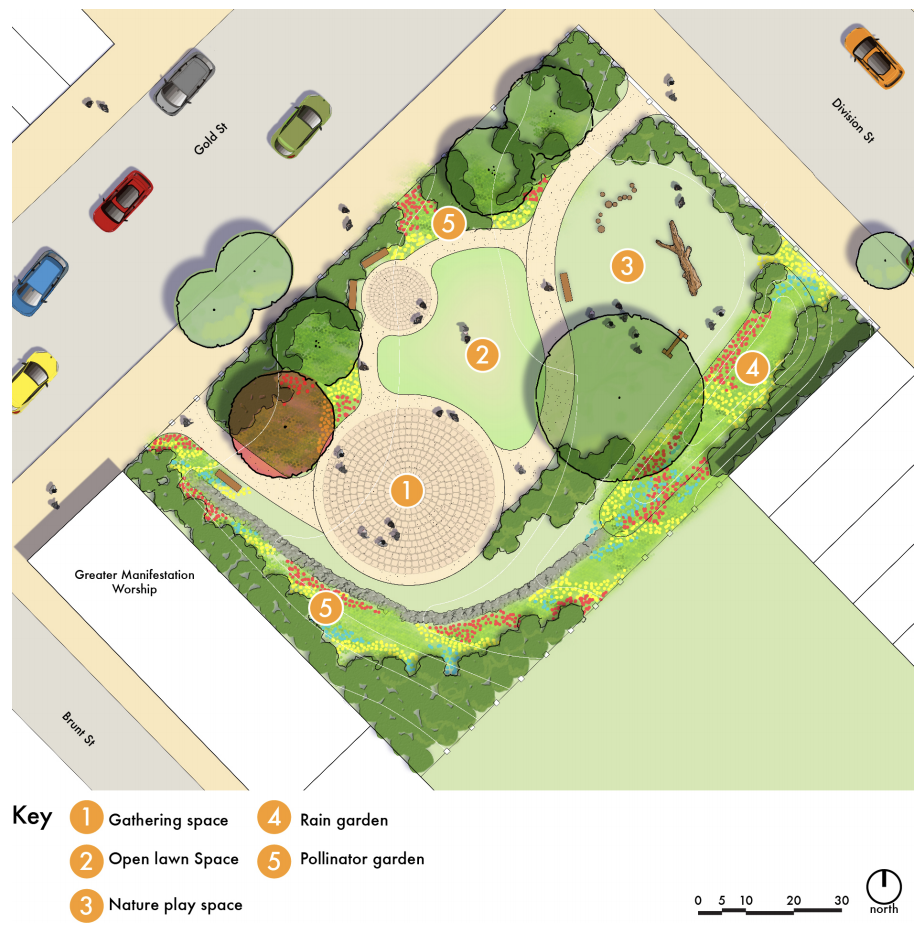
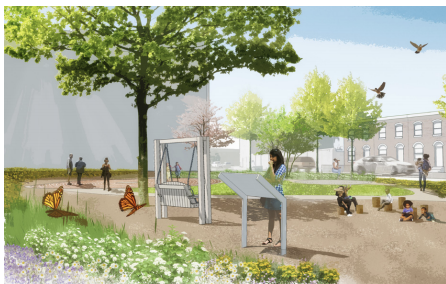
Nature Play Space on McCulloh Street
In contrast to the standard metal and plastic play structures, nature play spaces incorporate elements like vegetation, stone, sand, and water to inject nature into children’s play and learning environment. The proposed nature play space on McCulloh Street, which will replace two vacant lots, will provide children with a natural setting to balance on logs, play in the sand, and learn about rain gardens and native plants.
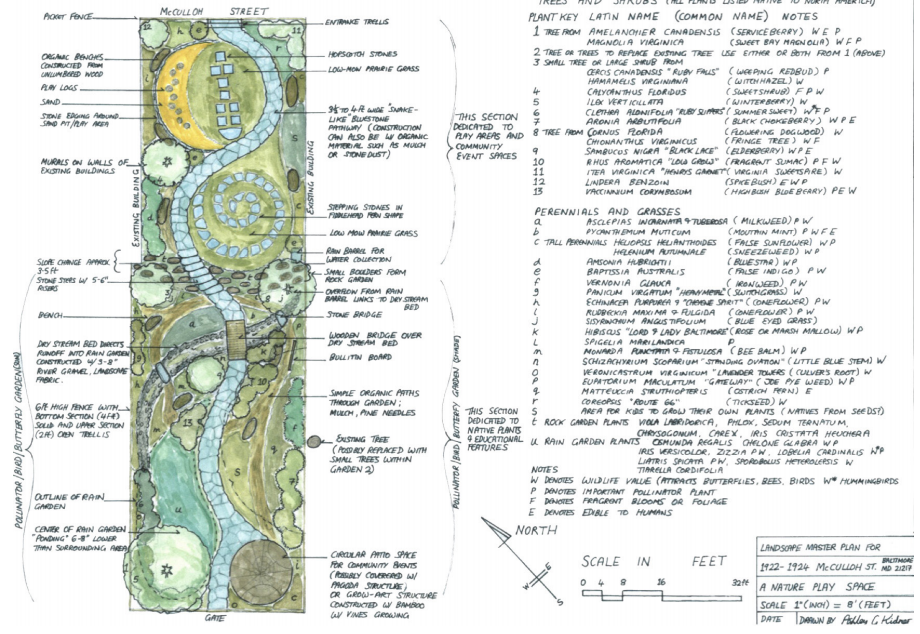
ETTING STREET GREEN CORRIDOR
Etting Street, which is a narrow one-way alley street flanked by smaller two-story row houses, has a significant amount of vacant properties. The high vacancy rate presents an opportunity to transform the north-south corridor into a connected series of green space that extends through the neighborhood.
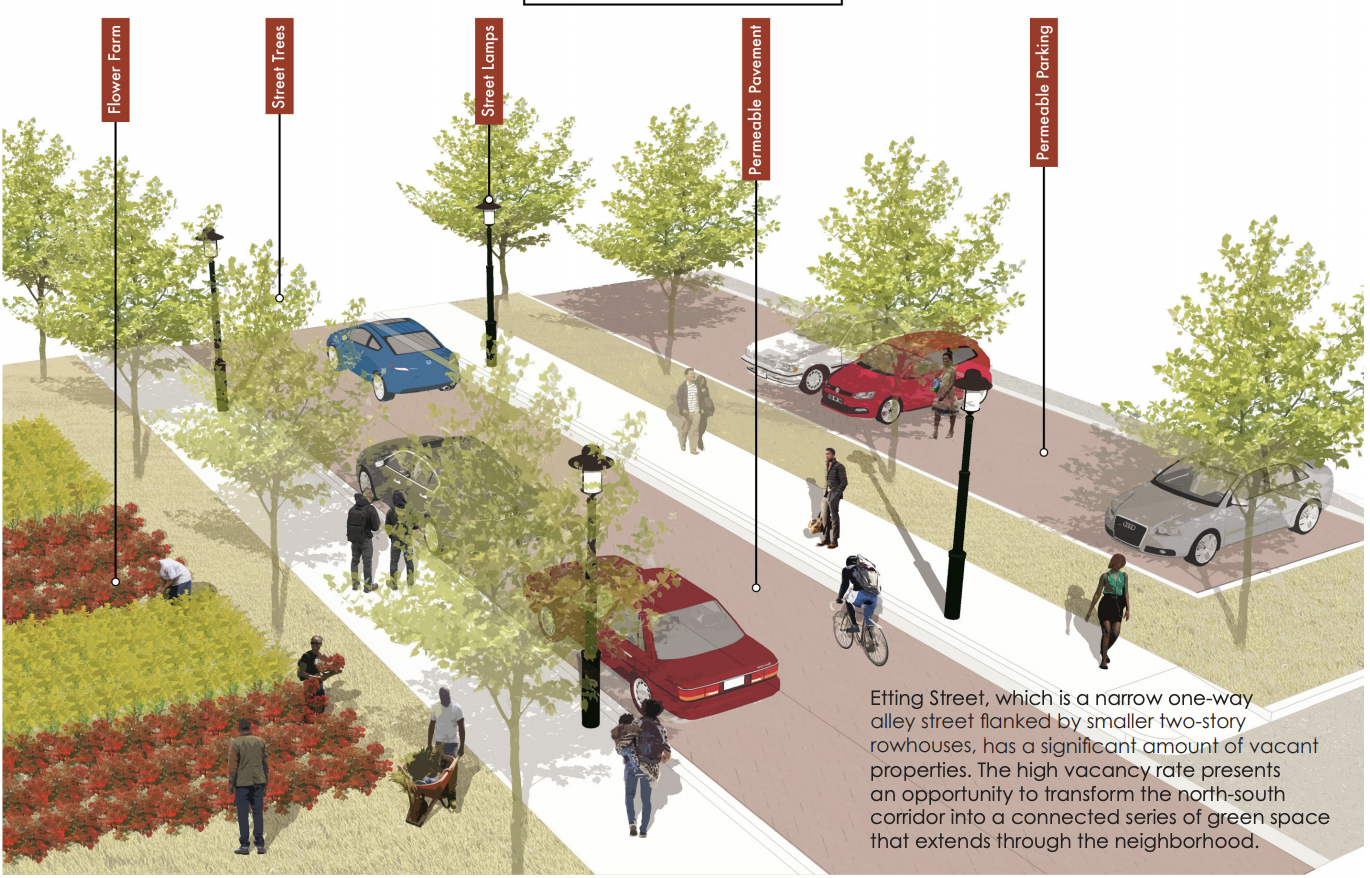
PEDESTRIANS
Improve the pedestrian environment to ensure a safe, comfortable, and pleasant walking experience
How?
Sidewalk Condition and Design Sidewalks should be accessible and designed to meet or exceed Americans with Disabilities Act requirements.
Traffic Calming Devices Marked crosswalks should be at every pedestrian crossing and be highly visible to drivers. This can be accomplished through color or material change. Bumpouts at intersections would shorten the crossing span and slow drivers. Narrowing drive lanes and installing speed bumps or tables would also slow down traffic.
Street Trees/Planting Zone Continuous street trees or planting zone would provide shading and buffer pedestrians from the street.
Pedestrian-Scale Lighting Consistent pedestrian-scale street lighting throughout the neighborhood could help increase resident’s perception of safety at night.
Street Amenities Amenities such as benches, trash cans, planters, signage, and others can help improve the pedestrian experience and highlight or celebrate neighborhood gateways or landmarks.

STORMWATER
Utilize Low Impact Development (LID) Techniques to Capture and Treat Stormwater Runoff
A significant portion of Druid Heights is covered by roofs, roads, and other forms of impervious cover. High impervious surface cover leads to an unhealthy amount of rainfall entering the city sewers without treatment.
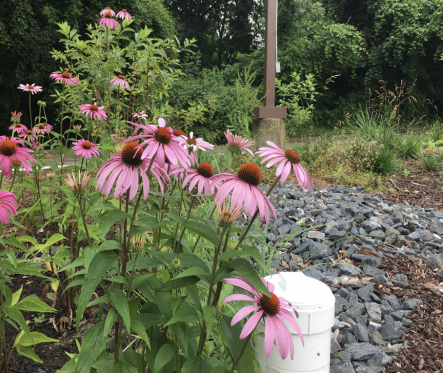
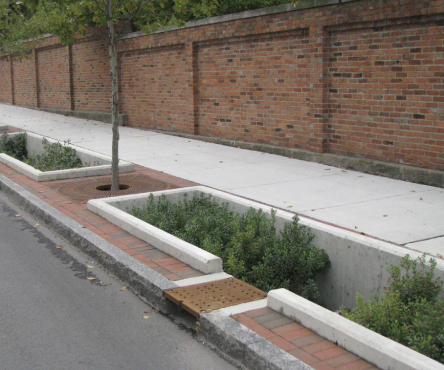
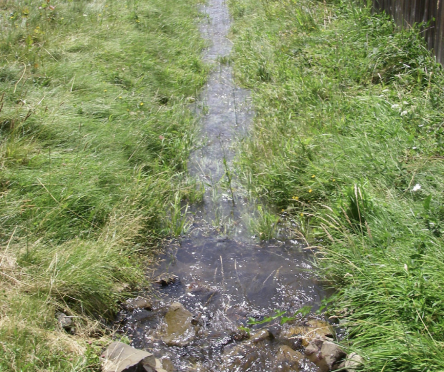
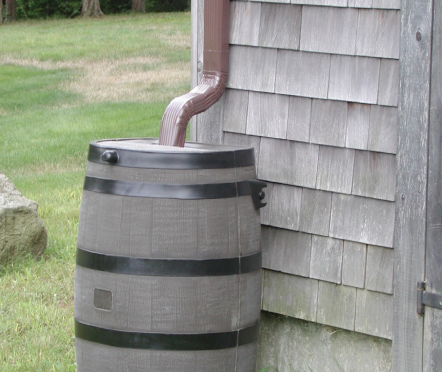
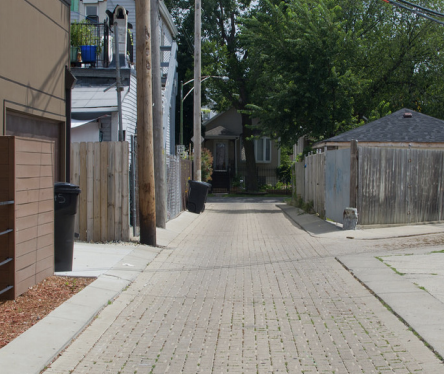
Plans for LID Techniques and Blue Infrastructure
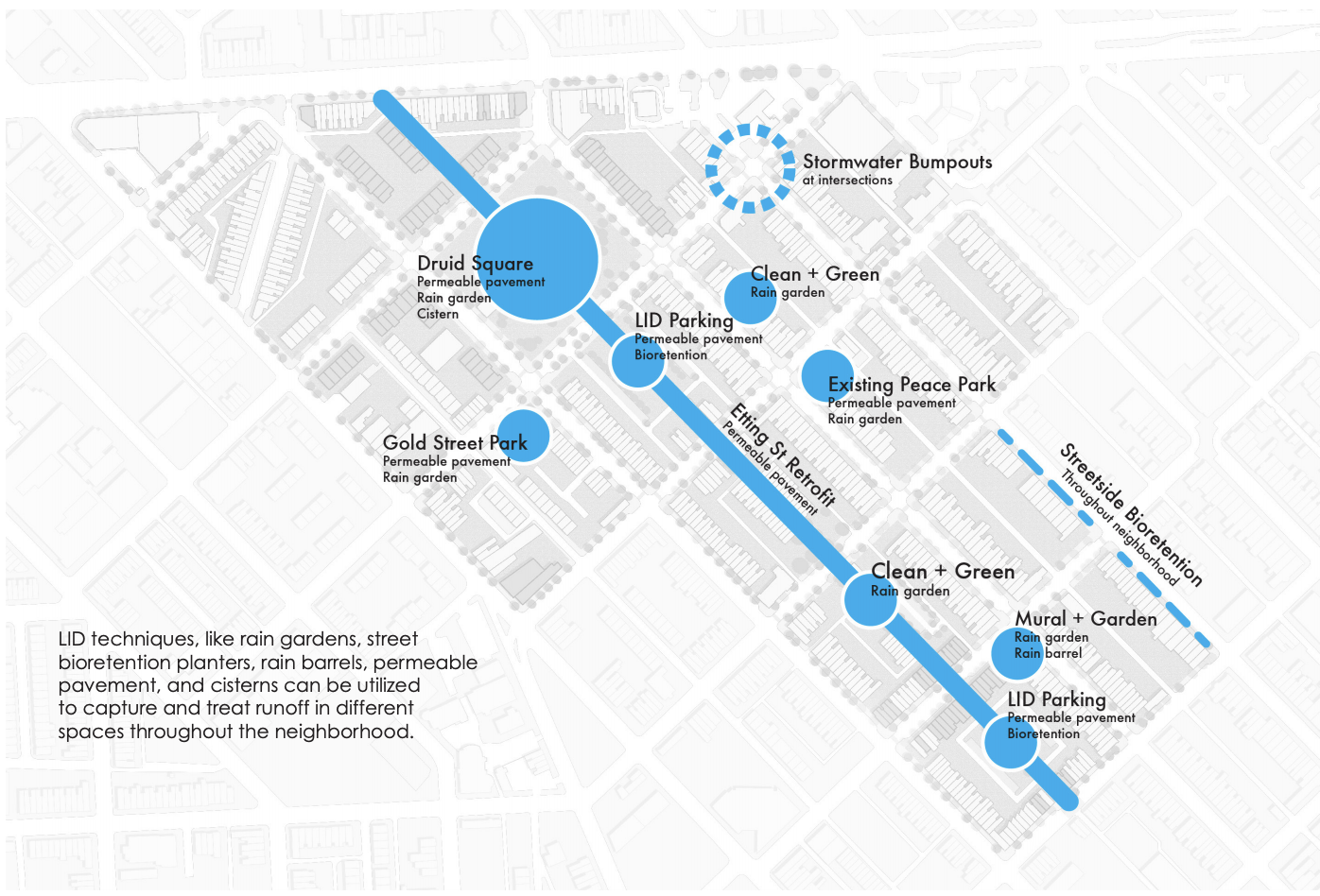
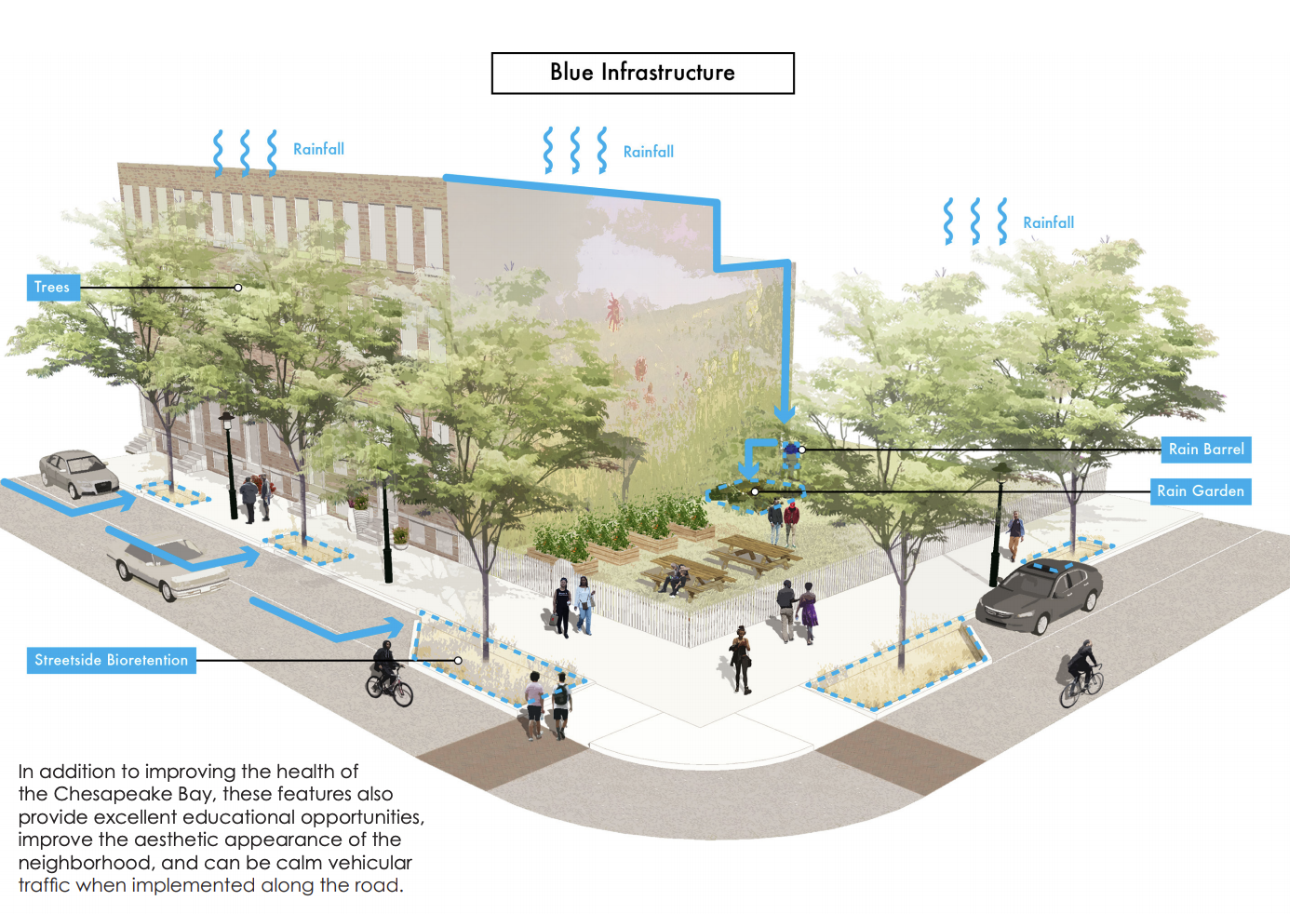
CANOPY COVER
Increase the Tree Canopy Coverage
Trees can provide environmental, economic, and social benefits to residents. Consistent street trees improve the aesthetic appearance of the neighborhood and can raise property values.
